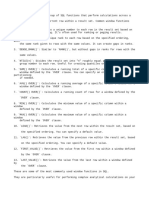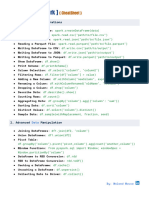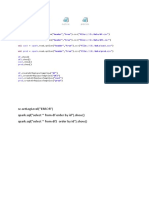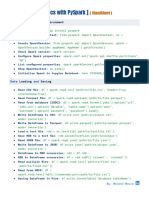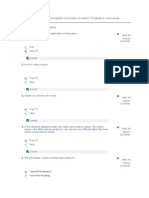0% found this document useful (0 votes)
11 views3 pagesWindow Functions Spark
Window functions in Apache Spark allow for calculations across a set of rows while retaining the original data. Key components include partitioning, ordering, and window specifications, enabling operations like ranking, cumulative sums, and lag/lead functions. These functions have real-world applications across various industries, including finance, retail, healthcare, and human resources.
Uploaded by
keshav9d9reddiCopyright
© © All Rights Reserved
We take content rights seriously. If you suspect this is your content, claim it here.
Available Formats
Download as PDF, TXT or read online on Scribd
0% found this document useful (0 votes)
11 views3 pagesWindow Functions Spark
Window functions in Apache Spark allow for calculations across a set of rows while retaining the original data. Key components include partitioning, ordering, and window specifications, enabling operations like ranking, cumulative sums, and lag/lead functions. These functions have real-world applications across various industries, including finance, retail, healthcare, and human resources.
Uploaded by
keshav9d9reddiCopyright
© © All Rights Reserved
We take content rights seriously. If you suspect this is your content, claim it here.
Available Formats
Download as PDF, TXT or read online on Scribd
/ 3













